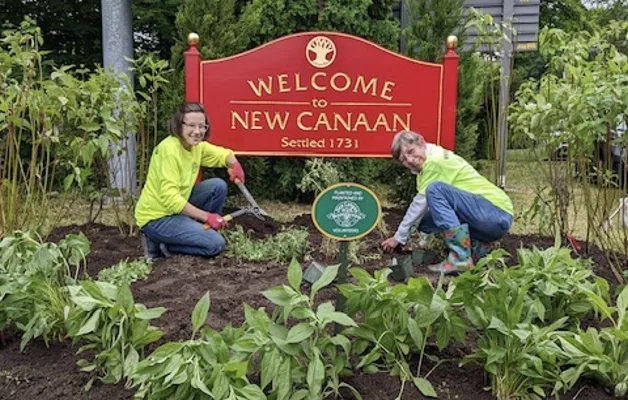
By Annali Hayward
A new long-term exhibit has opened at Grace Farms, bringing the causes of the Design for Freedom movement directly to the public for the first time.
‘With Every Fiber’ combines artistic and industrial elements to tell stories, provoke thought and ultimately help audiences think about where the materials come from that make up the built environment.
At the opening ceremony last week, over 100 attendees from across the architecture, design and materials industries gathered to hear directly from those involved in the exhibit about its creation, meaning and intended impact.
“It is a marker in time for us,” said Grace Farms founder and CEO Sharon Prince, who, in 2020, began the movement which has now reached over 25,000 professionals through meetings and presentations.
Grace Farms curator and creative director Chelsea Thatcher brought together an all-star team of designers, suppliers, artists and other industry professionals to collaborate on the space, including Nina Cooke John of Studio Cooke John Architecture + Design and Eddie Opara, partner at Pentagram, who led the graphics.
The result is an exciting mix of art, science and design. Poetry from U.S. laureate Joy Harjo sits across from examples of cutting-edge research into new sustainable materials from the Yale Center for Ecosystems + Architecture — including those made from coconut, mycelia, and silk cocoons. The latter, said Anna Dyson, founder of the Yale center, “can be stitched together to make something that is stronger than steel in terms of tensile strength.”
Around the walls, which are covered in a custom fabric by Maharam, photographs by humanitarian Lisa Kristine highlight the plight of the estimated 28 million people worldwide in enforced labor or modern slavery. Elsewhere, examples of pilot Design for Freedom projects show how ethical sourcing can be done, such as in the New Canaan Library, where a number of materials for the new building were mapped as far upstream in the supply chain as possible.
The balance the world needs, said Dyson, is to “design for both humans and other systems, other living beings simultaneously because we’re all together. And that’s exactly what the materials on this wall are.” Indeed, although it is titled ‘Future Materials,’ Dyson says this part of the exhibit is more like ‘back to the future,’ showcasing “indigenous and vernacular” methods that the Yale research teams have developed from around the world.
Cooke John, who designed the space, told attendees that even as an industry insider, she had not realised the extent of the problem. “I hope that as [they] move in and out of the intense pockets of these displays and move through the room, young families from the neighborhood and design professionals alike will find moments of contemplation and inspiration amongst the depth of information that puts a face, hands and legs onto the real people who support our lifestyles.”
What’s next in terms of action? “I’m looking at all of you,” Prince told the assembly of industry insiders — a sentiment echoed by Opara in his closing remarks:
“As designers, architects, researchers and curators, we wield the power to inspire change,” said Opara. “Let us use this exhibit as a platform not only to display beauty, knowledge and accessibility, but also to champion sustainable materials and fight against forced labor, as our world desperately needs us to.”


